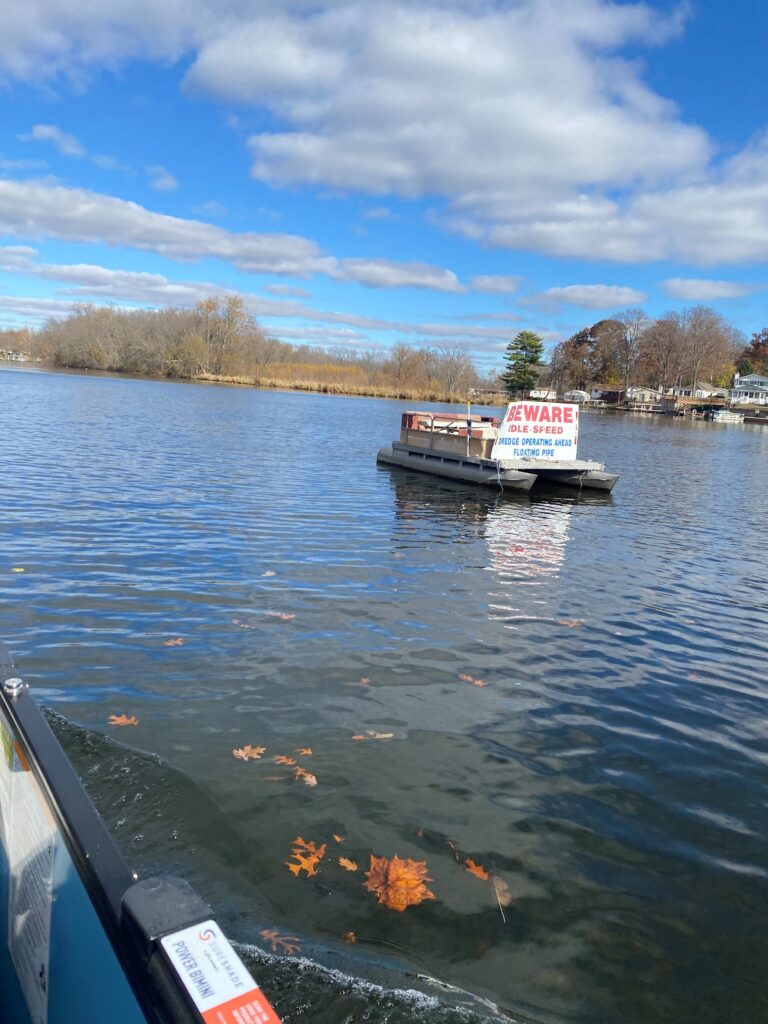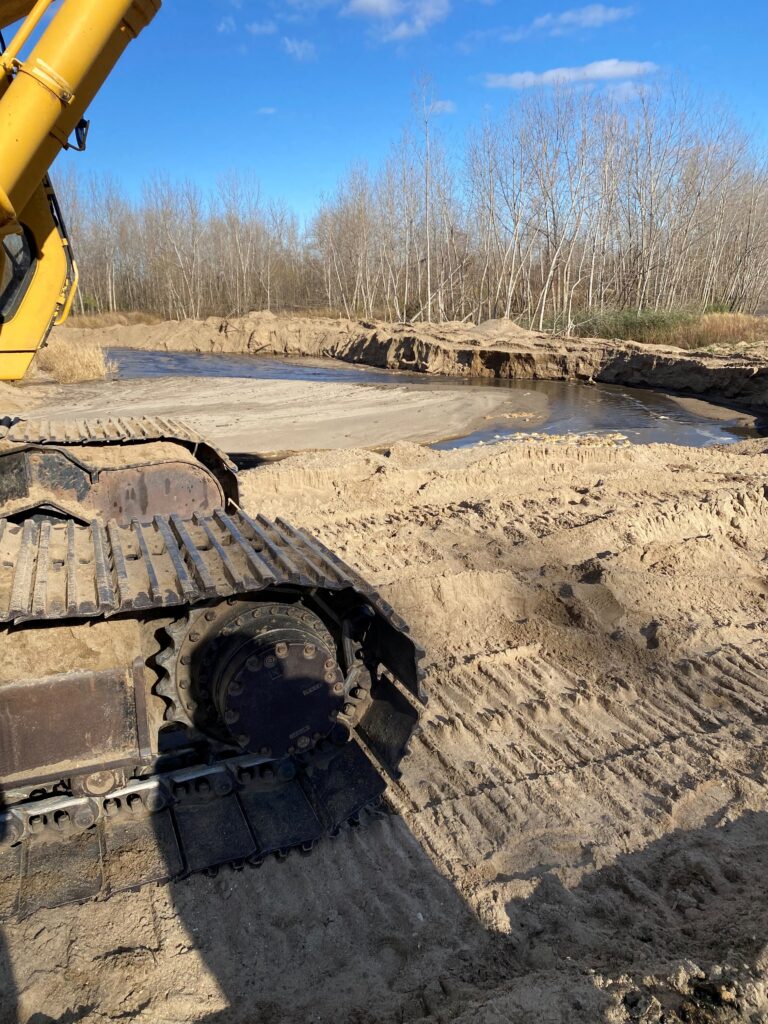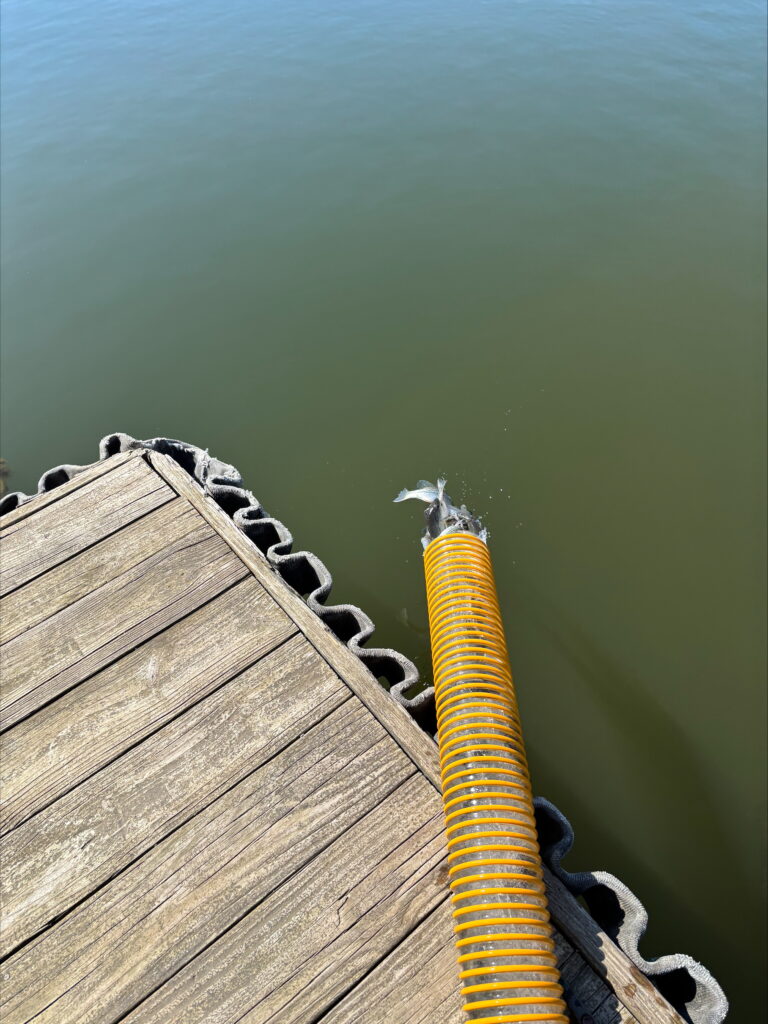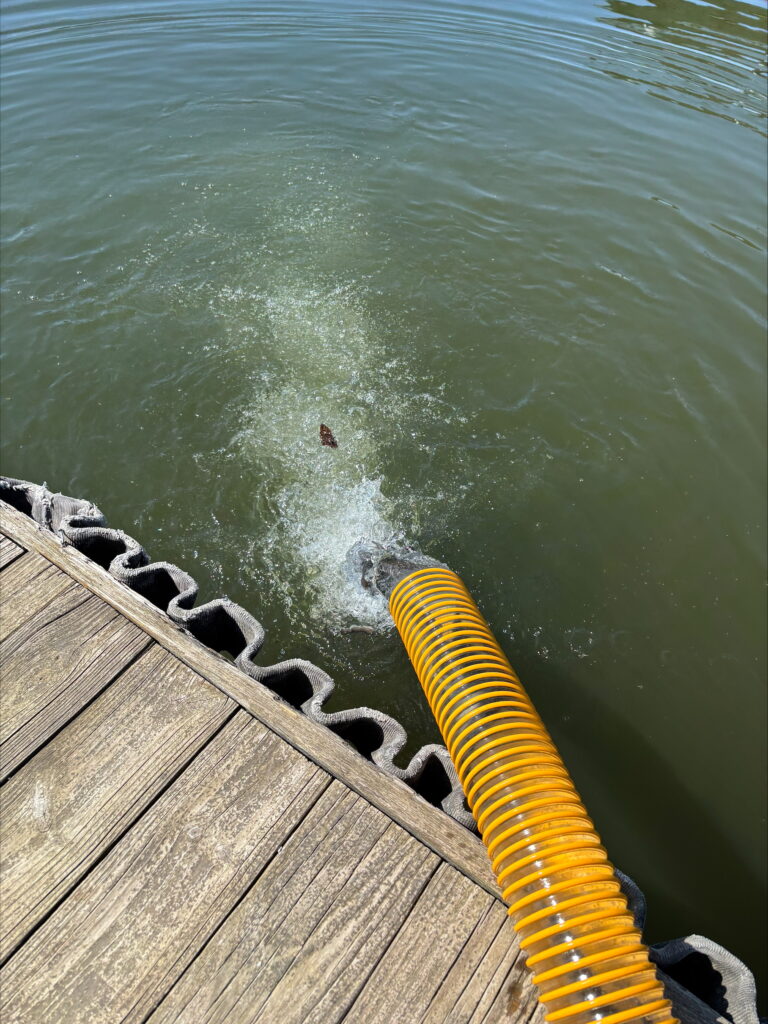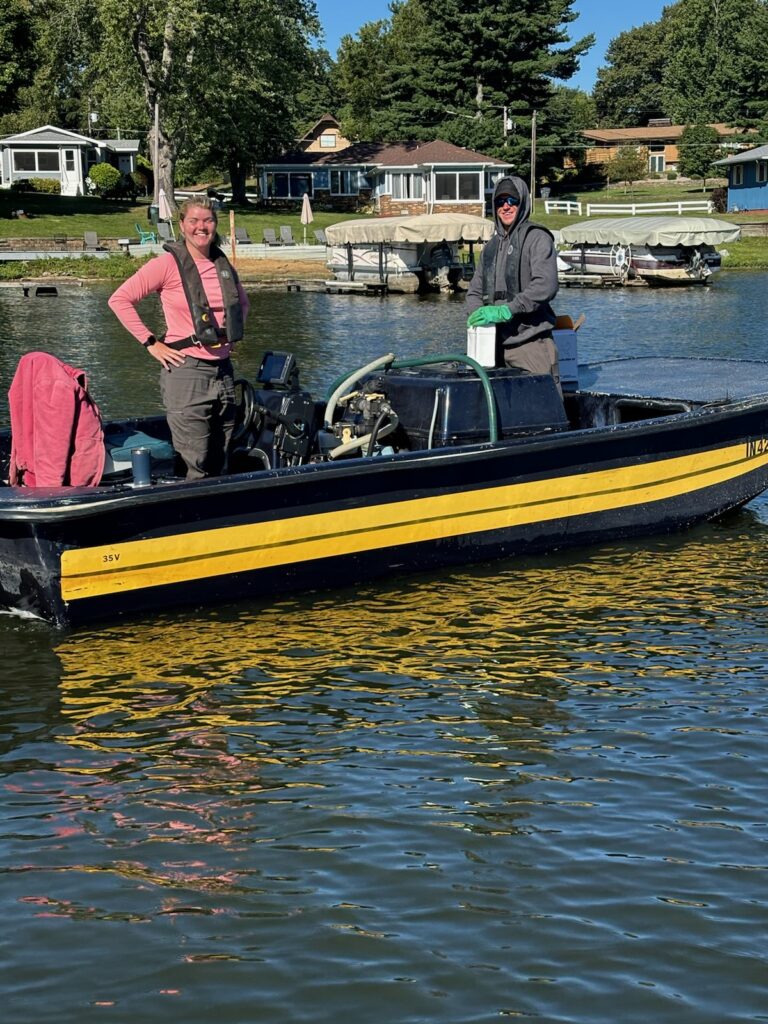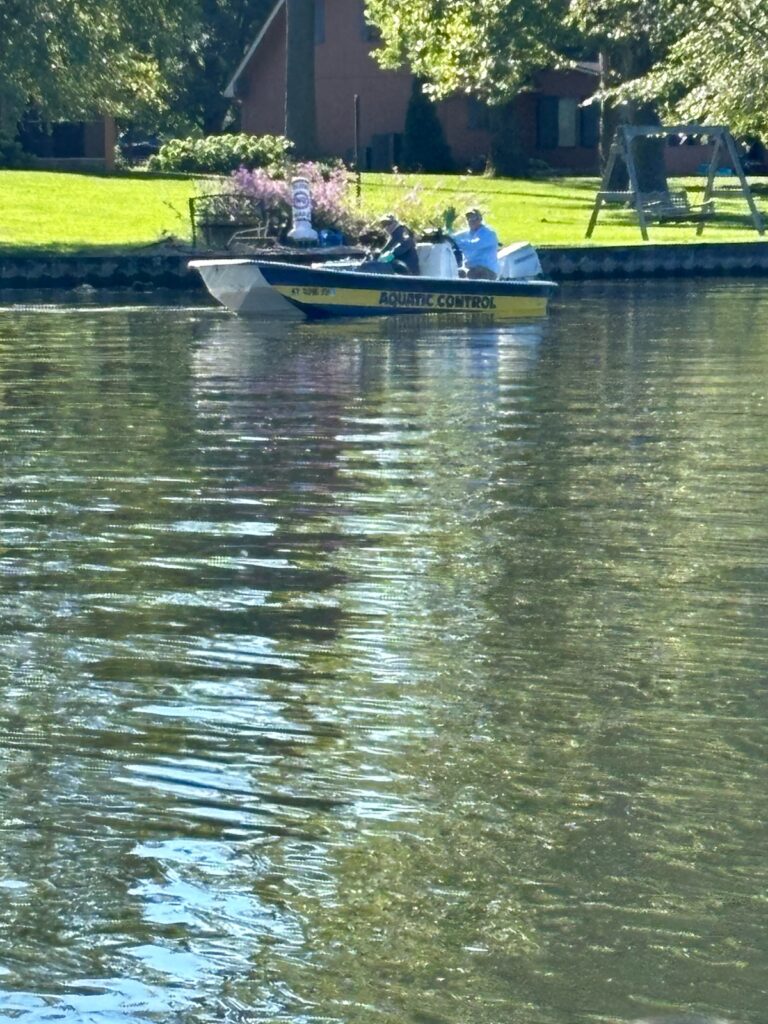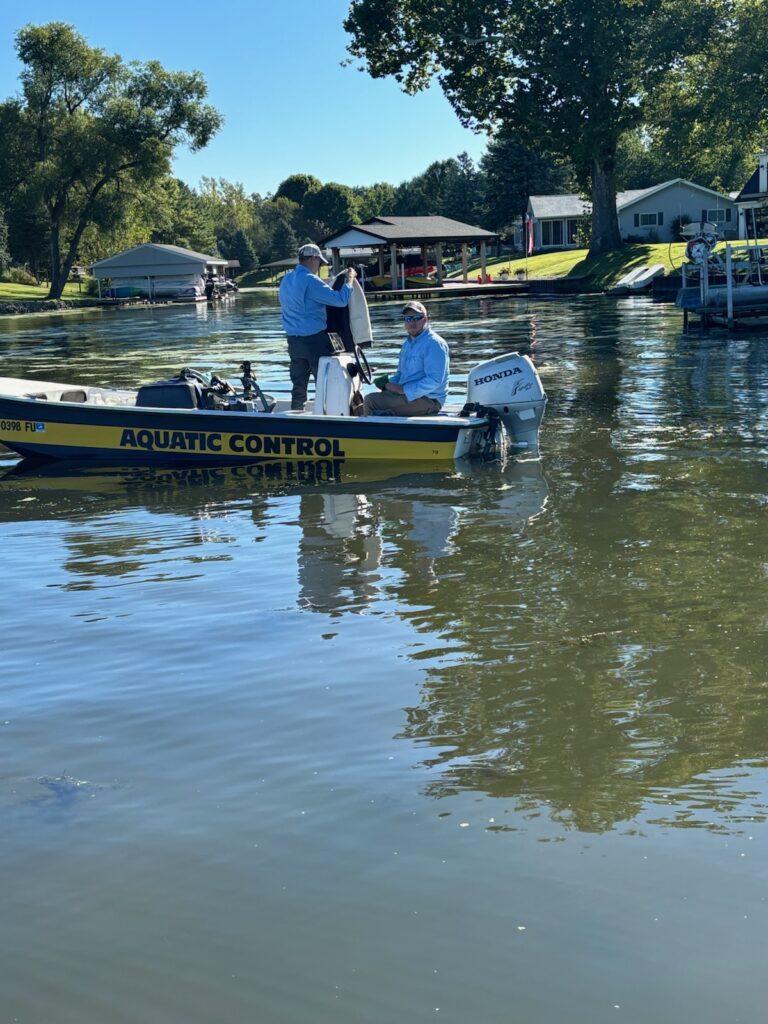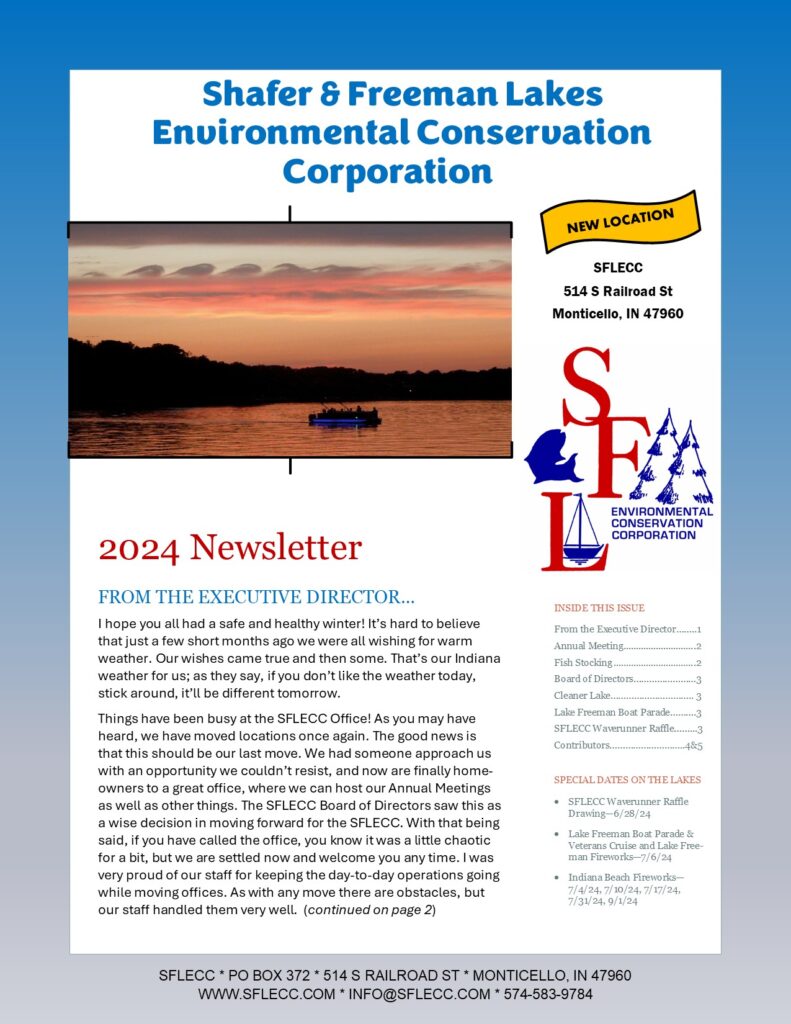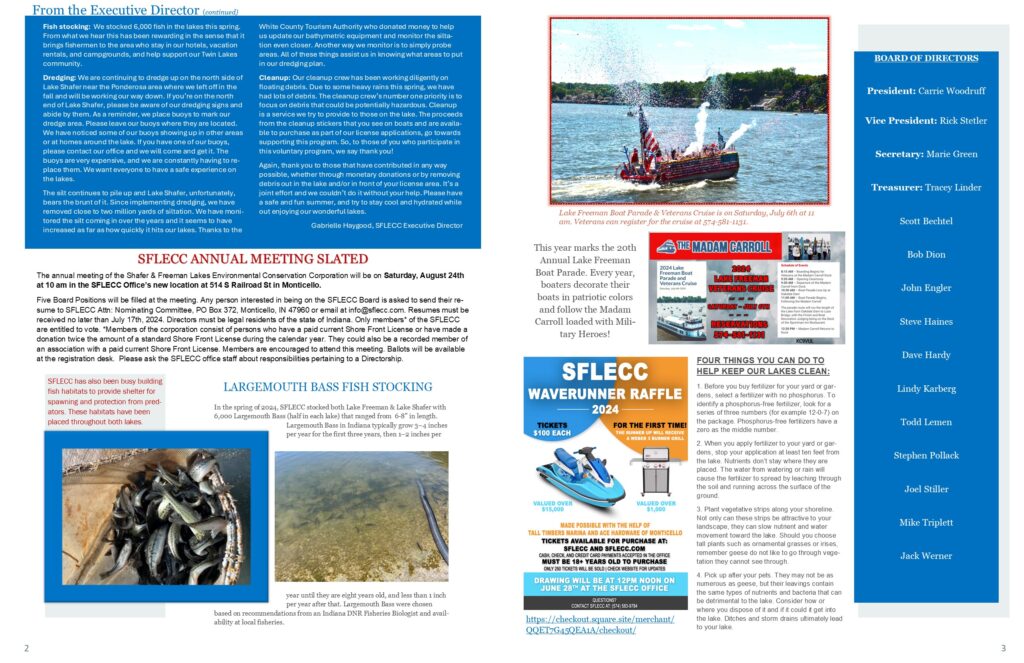Just a reminder that Shorefront Licenses are now due and you can pay for a Standard Shorefront License here. All Association, Commercial, Easement, and Specific Shorefront Licenses can only be paid by mail or by phone at this time. Thank you & Happy June!
⚙️ Dredging Equipment Overhaul
Maintaining our dredging equipment is a top priority. In January 2025, our dredge and fuel barge were removed from Lake Shafer for maintenance. The dredge motor was sent to northern Indiana for a complete rebuild and returned to our garage on April 21st and is now back in the water. It should serve us for another 7–8 years.
While the motor was being repaired, our dredge crew worked on refurbishing the barge base, including scraping and applying a rubber sealant to prevent leaks. They have also been busy running our excavator to move silt in our retention ponds and installing new chains and other parts to ensure optimal performance.
Dredging areas for the 2025 season include locations north of 8289 N Kiger Dr on Lake Shafer, progressing downriver toward N Barekman Ct. The 12-inch dredge pump will remove sediments brought down from the Tippecanoe River. Please be aware of the pipeline and buoys marking the dredging zones, which are within Idle Zones enforced by the Indiana Department of Natural Resources.
🛠️ Fuel Barge Maintenance
The fuel barge was also removed for repairs, including stabilization spuds. All maintenance has been completed, and it’s back in the water alongside the dredge barge.
🌿 Invasive Vegetation
Eurasian watermilfoil was found in Lake Shafer last year and was successfully treated with ProcellaCOR. An Invasive Vegetation Committee was created last fall and will continue to monitor and plan next steps. In the off season, they attended a conference to learn more about invasive aquatic vegetation. More information on invasive species identification and what you can do to treat and stop the spread of milfoil is available on the website under Aquatic Vegetation info. SFLECC would like to thank the businesses, organizations and homeowners that have donated to SFLECC’s efforts in eradicating Eurasian watermilfoil!
🐟 Fish Stocking
In March of this year, we stocked 2,700 6-8″ Largemouth Bass in Lake Freeman and 2,700 of the same in Lake Shafer, all thanks to a grant from NiSource/NIPSCO. Happy angling!
🌿 Cleanup Crew
Two seasonal employees for our Cleanup Crew have been hired again this year. These positions start in mid-May and run through August. The Cleanup Crew operates on Lake Freeman and Lake Shafer using pontoon boats marked “SFLECC.”
To report large floating logs:
- Call SFLECC at (574) 583-9784 to submit a work order.
- If a tree is still attached to the shoreline, it cannot be removed due to the Indiana Department of Natural Resources regulations protecting fish habitats.
- Please be patient; our crew is addressing tickets in the order received.
How you can help:
- Mark hazards with an empty milk jug.
- Pick up smaller floating debris in your area.
- Do NOT dump leaves, grass clippings, or any hazardous materials into the lakes.
Your voluntary purchase of Clean Lakes Stickers helps offset Cleanup Crew expenses. Each set includes a discount card for local businesses.
Thank you for your continued support in keeping our lakes clean, beautiful, and safe!
🎟️Waverunner Raffle
The SFLECC Waverunner Raffle is back! BUY TICKETS NOW!
Must be 18 to participate and you do not have to be present to win.

We hope everyone enjoys a safe and wonderful season on our beautiful lakes!

Free Fishing Days are on their way!
This year’s Free Fishing Days are May 4, June 7-8, and September 27. On these days, Indiana residents can fish the state’s public waters without a fishing license or trout/salmon stamp. All other rules such as seasons, bag limits, and size limits apply.
Find all you need to know about fishing in Indiana here: Indiana DNR Fish & Wildlife

Dredging Areas for the upcoming 2025 season will include north of 8289 N Kiger Dr on Lake Shafer in Monticello, IN 47960. From there, the dredge will work down-river and hopefully make it near N Barekman Ct. by the end of the season. The dredge being used is a 12-inch dredge, which means that it has a pump with a 12-inch discharge port. It will be removing sediments coming down the Tippecanoe River. Watch for the pipeline and the buoys marking it. The pipeline is transporting the sediments to a disposal site. These projects are occurring within Idle Zones established and enforced by the Indiana Department of Natural Resources. Please respect the Idle Zones.
SFLECC Board of Directors President, Carrie Woodruff, called the meeting to order and welcomed those in attendance. She introduced the Board of Directors and went over what the SFLECC has been doing over the past year.
Carrie Woodruff then introduced the seven candidates for the five available Director positions: Rick Stetler (incumbent); Jack Werner (incumbent); Greg Deitz; John Engler; Darin Griesey; Ed Lucy; Rick Sweet. Voting took place throughout the meeting and ballots were collected at the end.
In lieu of Treasurer Tracey Linder’s absence, Carrie Woodruff presented the financial state of the organization. She reported that finances were within the projected budgets for operations and dredging. Operations revenue was at 103% of the budget at the end of July and operations expenses were at 49%. On the dredging side, expenses were at 40% through July.
Up next, Executive Director Gabrielle Haygood thanked all who came to the meeting and introduced the board and the staff. She proceeded to inform the attendees of all SFLECC has been doing this year. In April, SFLECC stocked fish and installed some fish habitats in both lakes. In May, SFLECC bought a new-to-us office building/meeting room/garage and moved to it. She talked about dredging, updating equipment, and maintaining the retention ponds, and how the flooding in July set back the dredging schedule greatly. Since then, the cleanup crew has been in overdrive with all the logs and debris that came down from the river. There has also been an invasive aquatic plant species called Eurasian Milfoil found on Lake Shafer and Aquatic Control Inc out of Valparaiso will be spraying the weed on September 4, 2024.
Land Manager Owen Lovvorn then talked about the Cleanup Crew and the debris that has been collected this year. He then discussed the Shore Front construction happening on the lakes.
At this point, Carrie Woodruff thanked the board for their volunteer service and presented Director & Secretary Marie Green with a gift for her many years of dedication to the SFLECC.
After a period of questions and answers, the meeting was adjourned.
Votes were then counted. Incumbent Jack Werner was voted back on the board, along with new board member Greg Deitz. John Engler, Ed Lucy, and Rick Sweet will also be returning to the board.
*After the September Board Meeting, here is the new lineup of the Board of Directors for 2024-25: President-Carrie Woodruff, Vice President-John Engler, Secretary-Mike Triplett, Treasurer-Tracey Linder, Scott Bechtel, Greg Deitz, Bob Dion, Steve Haines, Dave Hardy, Lindy Karberg, Ed Lucy, Steve Pollack, Joel Stiller, Rick Sweet, Jack Werner.

The Waverunner Drawing was held at the SFLECC office on Friday, June 28th at noon. Congratulations to ticket #142 on winning the Yamaha Waverunner from Tall Timbers Marina! Another congrats goes to ticket #171 on winning the Weber Grill from Monticello Ace Hardware!
Thank you to all those who participated and bought tickets! We greatly appreciate it!
The SFLECC Office will be closed Thursday, May 30th and Friday, May 31st while we transition to our new office located at 514 S Railroad St Monticello. Payments can be put in the drop box at our new location, which is on the right side of the front door. Thank you for your understanding while we make this move.


